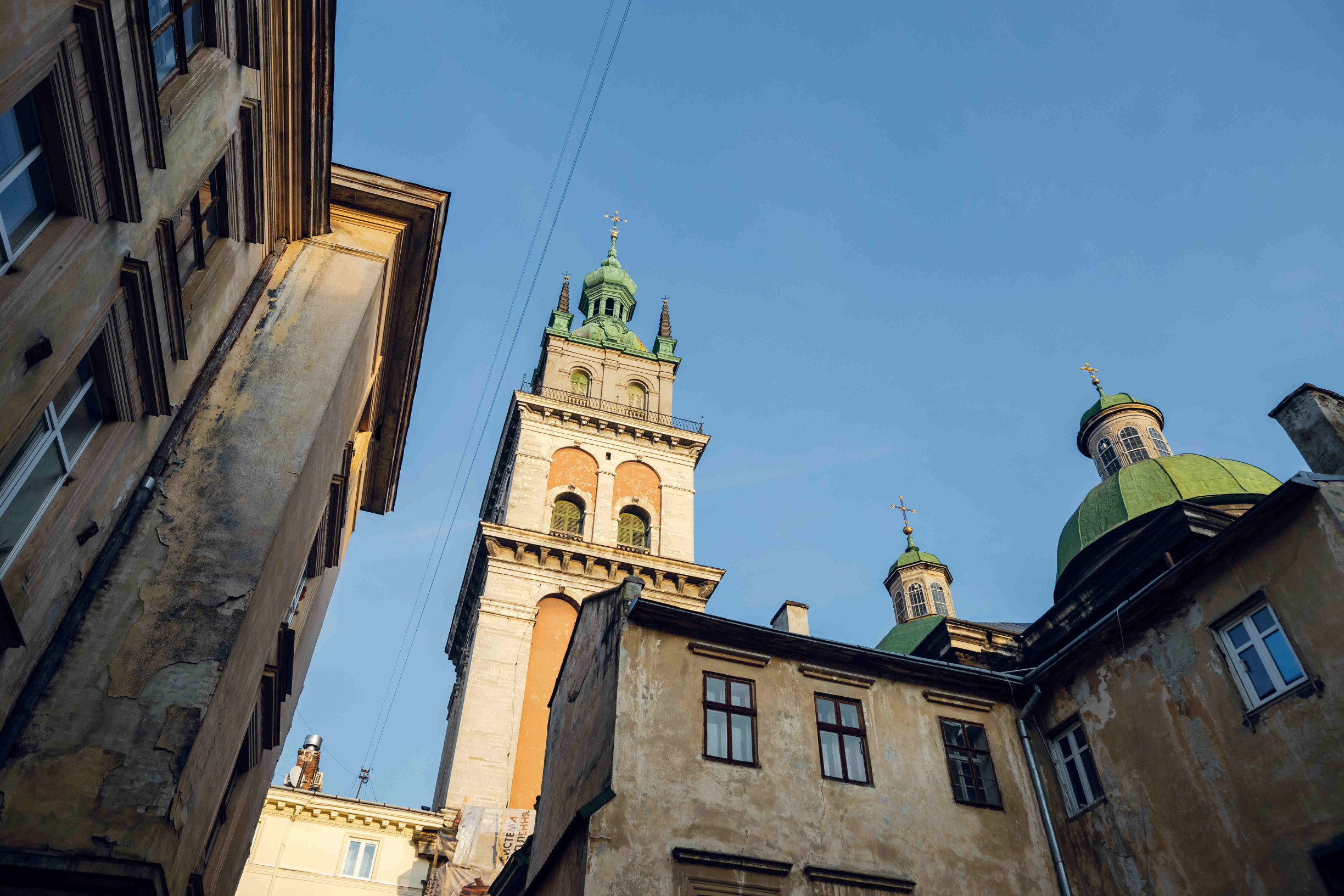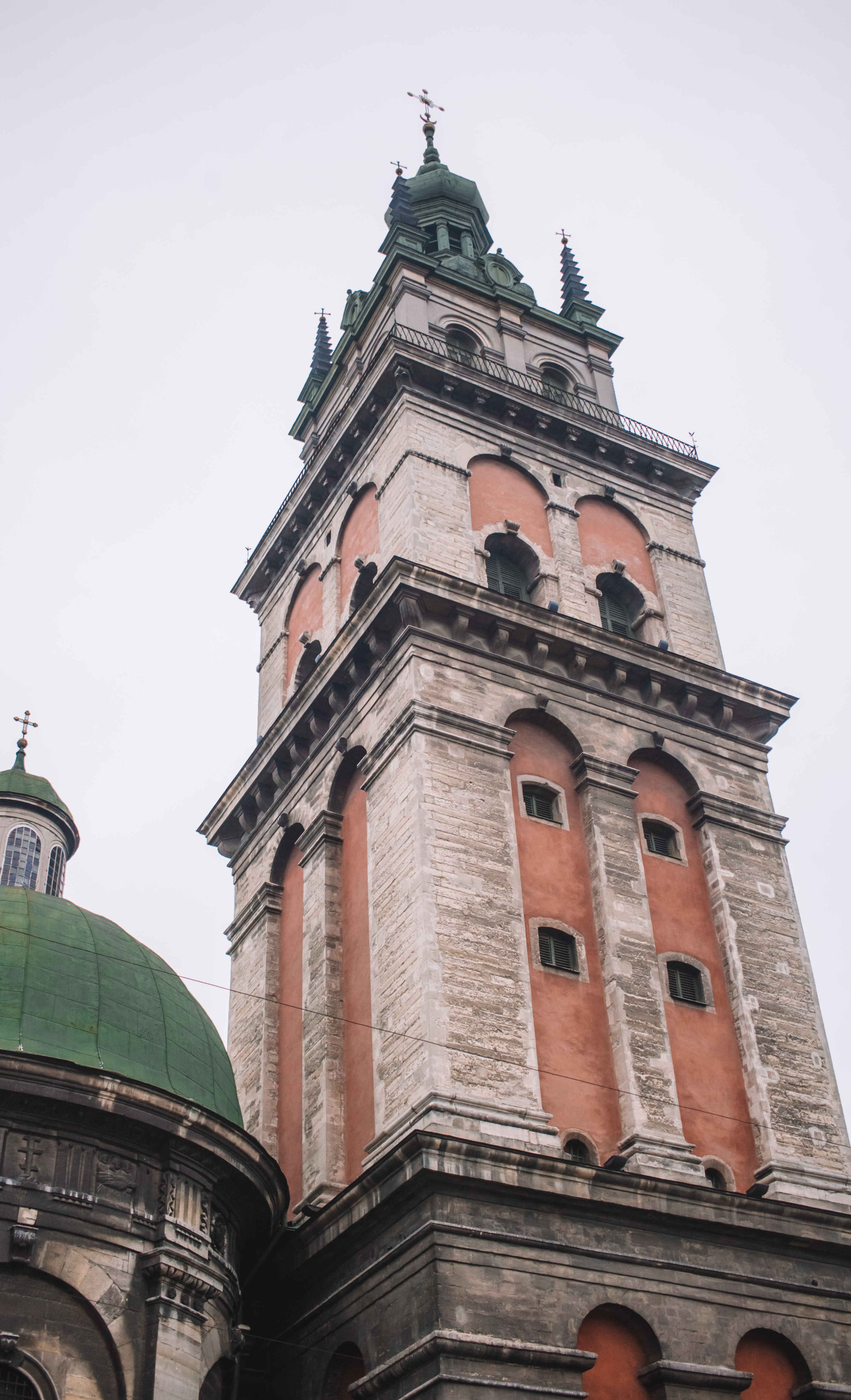The architectural ensemble of the temple consists of three buildings: the Kornyakt Tower, the Chapel of the Three Hierarchs, and the Assumption Church itself. The complex of buildings is one of the best examples of Renaissance architecture that combines features of Italian Renaissance and the traditions of ancient Ukrainian church construction. The sanctuary belongs to the Lviv Eparchy of the Orthodox Church of Ukraine.
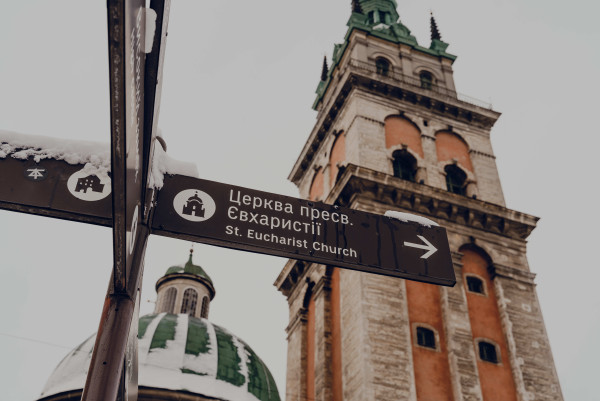
Cathedral of the Assumption of the Blessed Virgin Mary.
Researchers believe that the first church on this site was built during the times of the principality, but it was destroyed by a fire during the attack of Polish King Casimir III on Lviv. After that, another church was built, which lasted for over 100 years, but it was also destroyed by fire. The third church was successfully rebuilt (1547-1559) under the project management of architect Petro Italinsky. At that time, the church was sometimes called Voloska, as a significant amount of money for its construction was provided by the Moldavian (Wallachian) ruler Alexander Lopushnyak and his wife Roxana. The building stood for more than 10 years and also burned down due to a fire.
The fourth Assumption Church, which we can see in Lviv today, began construction in 1591. The well-known Lviv architect Paul Roman was invited to build it, with the assistance of Voycech Kapinos and Ambrose Prykhilny. The church preserves the art treasures of the 17th-18th centuries. Among them are the icons of the Passion cycle, which have been preserved from the original Assumption iconostasis of 1630-1638.
In 1847, by making a door in the south wall of the Chapel of the Three Hierarchs, the church was connected to the chapel. At the beginning of the 20th century, the church was decorated with stained glass by Petro Holodny. The crypt of the Assumption Church is the burial place of the most prominent figures of the Stavropigial Brotherhood, which was the center of cultural and spiritual life of Ukrainians in Lviv.
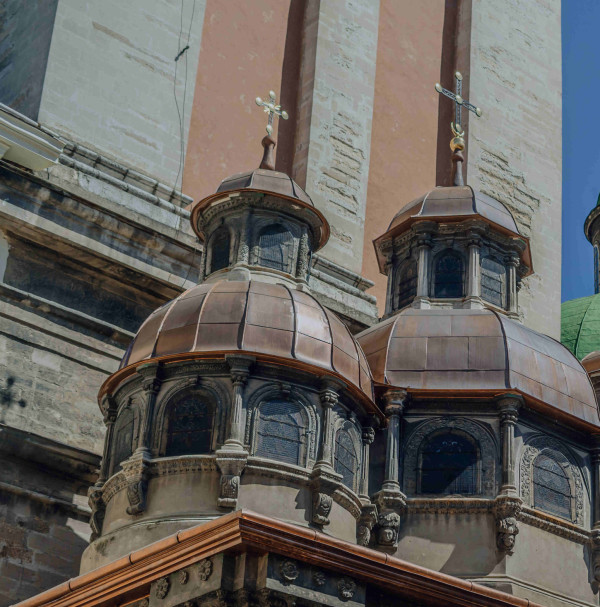
Kornyakta Tower and Kyrylo Bell
The logo of Lviv features five of the city's most famous towers, one of which is the Korczak Tower (marked in red on the logo) which was built between 1572 and 1578 based on a design by Italian architect Peter of Barboni, and named after the renowned patron Konstanty Korczak who financed its construction. At the time of its completion, the tower, which was 66 meters high, was the tallest in Lviv. It was from this location that the defender of the city shot an arrow through the hat of Swedish King Charles XII in 1704.
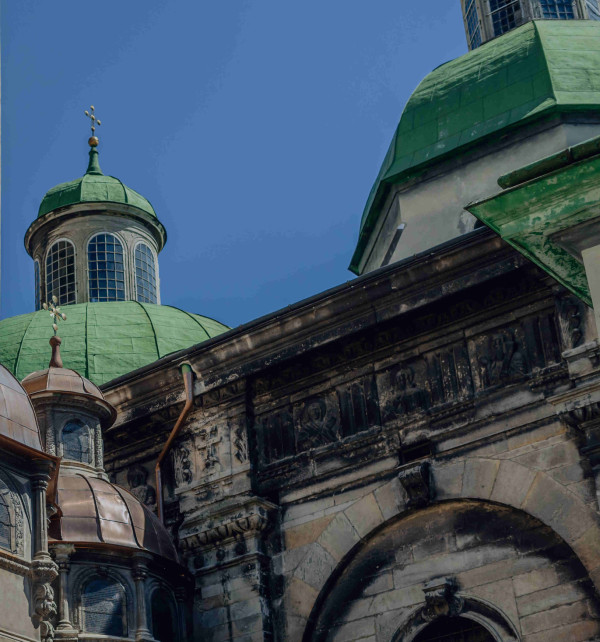
After the siege of Lviv in 1672, the tower was rebuilt due to damage from artillery shelling, and according to a design by architect Peter Beber, a fourth tier was added in 1695, featuring a Baroque helmet and four pyramids. As the tower served not only a defensive function but also as the belfry of a church, Konstanty Korczak commissioned the casting of the Kirilo Bell, which was impressive in its size, with a diameter of two meters and weighing 6.5 tons. At the time, it was the largest bell in all of Galicia. It served as the main bell of the city, alerting residents to military danger, fires, natural disasters, and the deaths of prominent Lviv residents regardless of their religion. However, when lightning struck the tower, the bell was damaged in a fire and fell. It was melted down and fully preserved in terms of composition, amount of copper and silver, and size. Archival materials attest to the fact that the bell did not lose its sound.
Chapel of the Three Hierarchs
Passing through the ancient vaults of the entrance gate, you feel transported from modern Lviv to medieval times. The unique Chapel of the Three Hierarchs is located in the so-called "cortile" - a medieval courtyard formed by adjacent stone arches. The chapel is dedicated to the three holy hierarchs: Basil the Great, Gregory the Theologian, and John Chrysostom. It was built in 1591 by Lviv architect Andriy Pidlisnyi with the support and financial assistance of Konstantyn Korniakt. For a time, the chapel served as a church. In 1671, it burned down and was restored with the funds of Greek Alexis Balaban, so it is sometimes called the Balabanivska chapel.
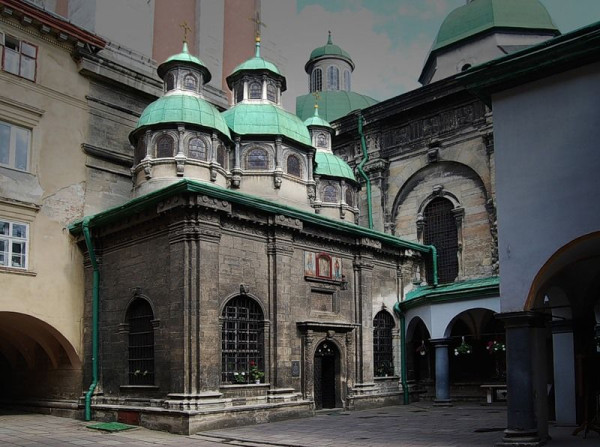
Despite all the restorations, this landmark has preserved its appearance and authenticity to this day. The columns near the entrance to the chapel are decorated with a grapevine ornament, with lion heads at the bottom. We draw your attention to the wrought iron doors, which are heavily decorated with volumetric rosettes and are an excellent example of Lviv's blacksmithing craft at the end of the 16th century. Previously, there was an iconostasis in the interior, but it was dismantled during the restoration of the church and chapel in the mid-19th century due to its poor condition. Today, when entering the building, one can see wonderful stucco decoration of the domes, painting, as well as carved elements. If you look up at the lantern of the chapel dome, you get the impression of immense height, although in reality it is no higher than a two-story building.
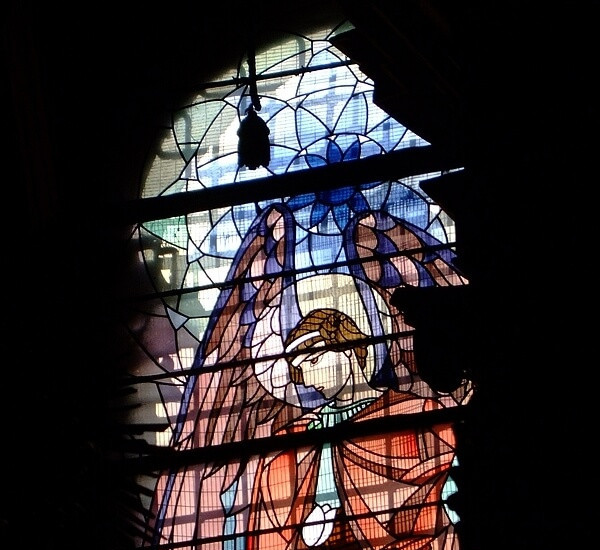
Stained Glass Windows.
The highlight of the Uspensky Church are the unique stained glass windows created in a special technique by the renowned Ukrainian artist Petro Kholodny. These stained glass windows are less than a century old, but their creator is considered one of the most significant artists of the 20th century, particularly as an icon painter and stained glass artist. Kholodny studied the technique and canons of Galician icon painting and sought to reproduce them in his own works. The stained glass windows are in the Art Nouveau style, and the themes depict Ukrainian history. In particular, the church contains stained glass windows on the themes of "Kievan Rus", "Galician Rus", and "Founders of the Uspensky Church". The use of national motifs in the stained glass windows of the Uspensky Church placed a bright accent on the Ruthenian origin of the church, as it was built for the Ukrainian community of Lviv.
The church's stained glass windows feature a unique element for post-Soviet Lviv - a trident stained glass window, which survived the Soviet era. Researchers say that this is the only public image of the Ukrainian national emblem that survived those difficult times and was not destroyed.
Today, the Church of the Assumption of the Blessed Virgin Mary is the cathedral of the Ukrainian Autocephalous Orthodox Church (UAOC). Worship services are held here. Additionally, the church is one of the most popular sacred architectural landmarks in tourist excursions in the central part of Lviv.
